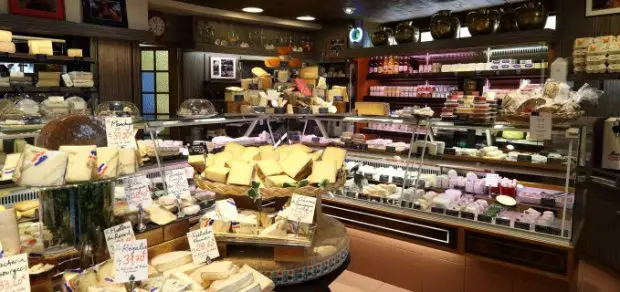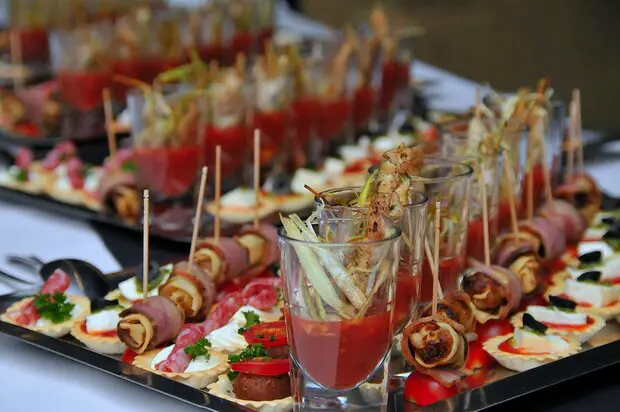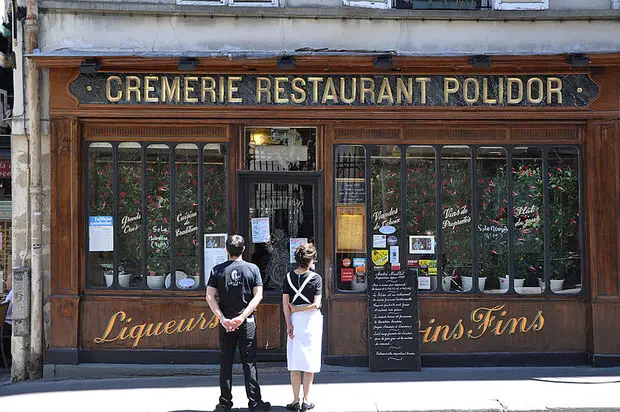Whether you’re seeking inspiration for your next meal or simply curious about French gastronomy, this article is your guide. I’ll be reviewing the classic and popular starters of French cuisine that are sure to tantalize your taste buds!
First up, a fun infographic to get us started:
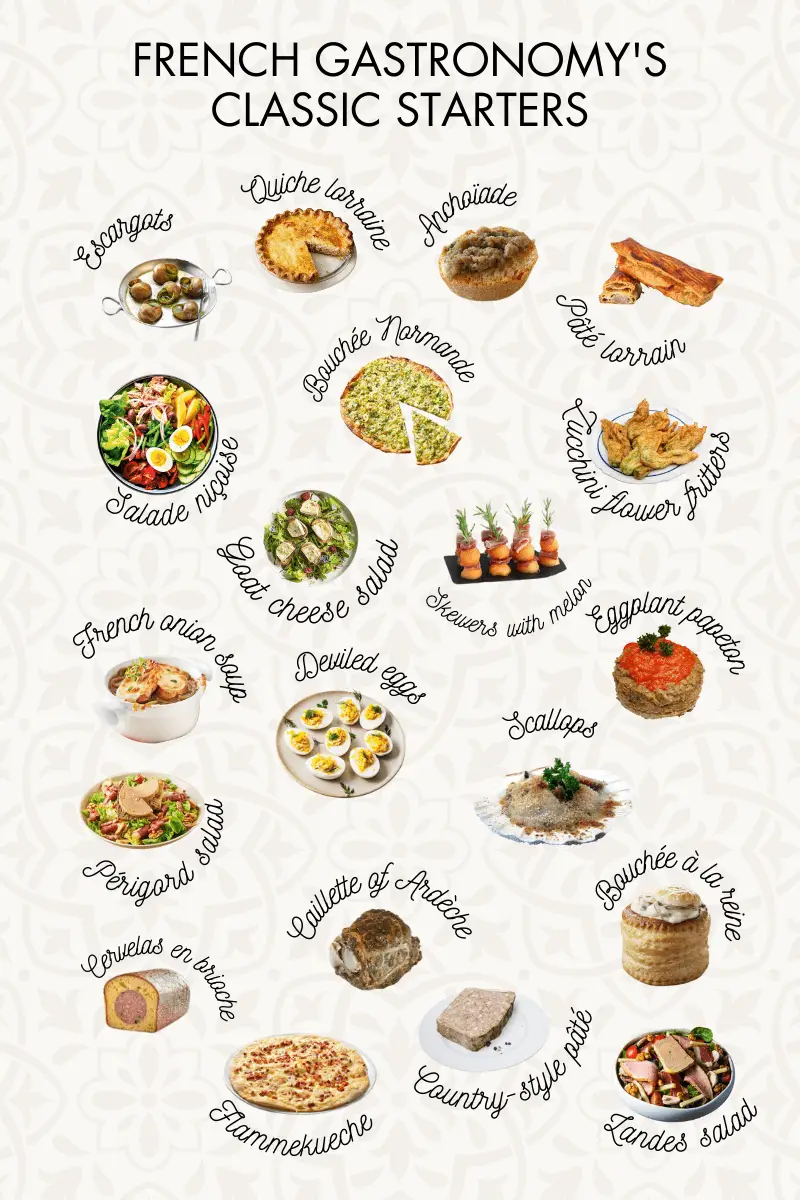
Escargots de Bourgogne
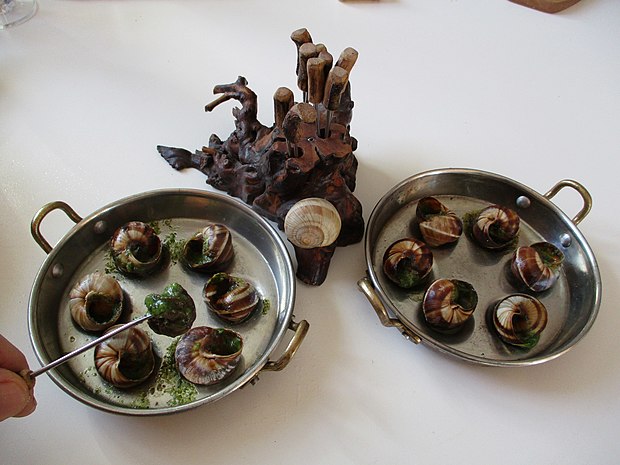
As a specialty coming from the region of Burgundy, escargots have been considered as a national dish since 1814, and the number of snails eaten in France is estimated to be 30,000 tons every year.
The snails are boiled inside their shells, then cleaned up before adding butter, parsley and garlic, and roasting them for 8 minutes. To eat the snail, a small-sized fork (or fourchette à escargot) will be required to extract it from inside the shell.
Whether it’s served as a starter or as a main course, the escargots de Bourgogne are one of the many dishes that are often present during family events. Escargots and wines go well together, for they both belong to the Burgundy cuisine.
Multiple variants exist, like the escargots à la provençale for example, but most would agree that the escargots de Bourgogne is one of the most well-known traditional dishes in France.
Quiche Lorraine
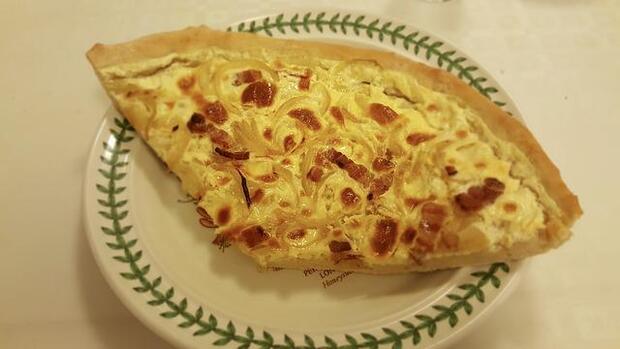
The quiche Lorraine is without a doubt the first dish that we think of when talking about Lorraine. This quiche can be eaten as a starter or as a main course, but most of the time people eat it as a warm starter.
Made out of fresh cream, fried bacon bits, and eggs, the quiche Lorraine can be savored at any moment during your day: at a picnic, during lunch break at work, among friends or with your family.
The quiche Lorraine can fit very well with a glass of Pinot blanc wine or vin gris.
Lorraine pâté
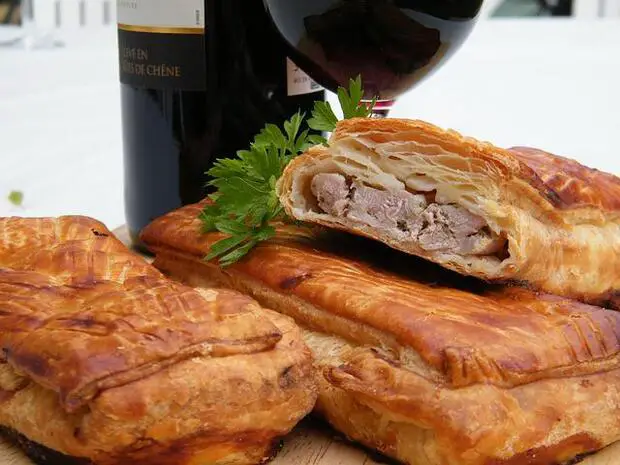
The Lorraine pâté is known for being the oldest recipe in the region, having been penned down in the oldest cookbook ever, dating from the year 1392.
Primarily made out of pork and veal meat, and wrapped in puff pastry, it’s a specialty that can be eaten warm or cold.
If you are wondering why the Lorraine pâté melts in the mouth, the secret to it is to marinate the meats a day before making the pastry and putting it in the oven.
Salade niçoise
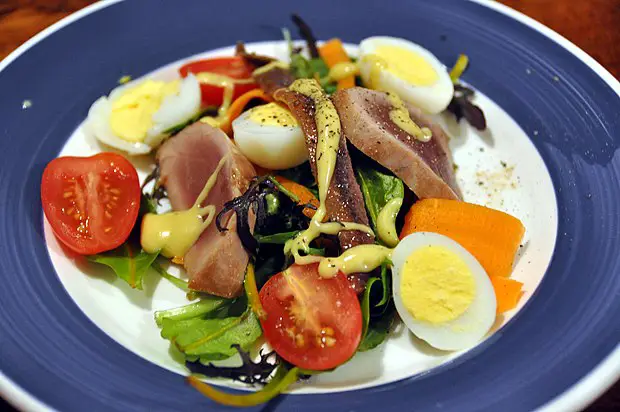
The salade niçoise is one of the many starters of Provencal and Mediterranean cuisines, and it is considered a sacred starter in the region.
Made with tomatoes, peppers, anchovies, onions, and a bit of olive oil, all the flavors of Provence are gathered for you to savor this salad in but a few mouthfuls.
The salade niçoise can also be eaten in a pain bagnat, which is a long or round bread that is often used for sandwiches. Add a bit of it in the bread, and your lunch break at work is ready!
This salad is popular worldwide, especially on the East Coast of the United States.
Leek flamiche
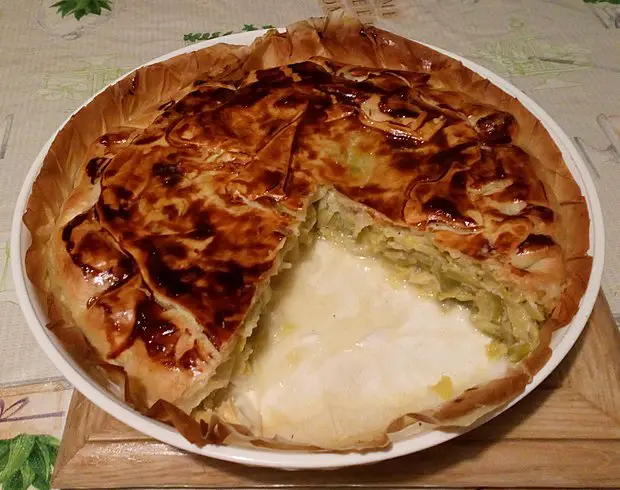
Just by reading its name, the flamiche may be similar to the quiche Lorraine, but it belongs to Picardian gastronomy. It is known as one of the very first recipes ever, tracing back to the Middle Ages.
The flamiche is cooked similarly to the quiche Lorraine, but the bacon bits are replaced with leek bits.
A variant exists named the « flamiche samarienne », with salmon or bacon bits added in the mixture alongside the leek bits.
Zucchini flower fritters
Zucchini flowers are one of the most well-known street food dishes of the cuisine from the city of Nice (as well as Italian cuisine). Dipped in donut batter and sparkling mineral water, those fritters are truly crispy.
This specialty comes from the Mediterranean Basin, and the 19th century would be when the zucchinis originating from Italy became an important ingredient in the Mediterranean and North European cuisines.
The zucchini flowers that are used for the fritters are males (recognizable with their long and thin stems), while the female flowers are those from which the zucchinis grow.
Eggplant papeton
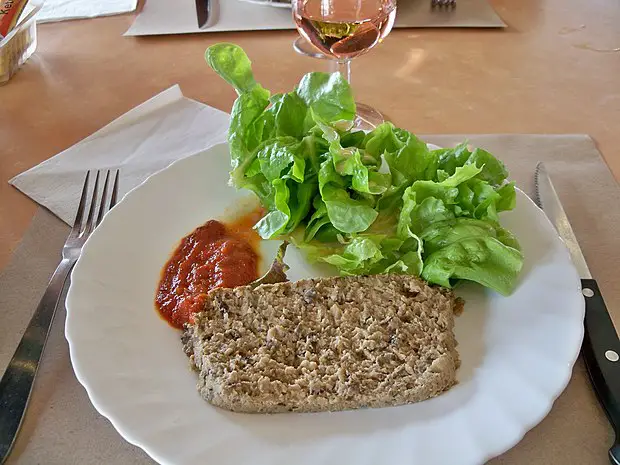
Papalin isn’t the only specialty served in the city of Avignon, the eggplant papeton is a typical starter that you should definitely taste.
This flan is made with eggplant dip and eggs, with its coulis made out of fresh tomatoes. This starter can also be enjoyed along with a glass of Palette red wine.
The delightful taste of this dish will make you discover the incredible flavors of the Provencal gastronomy.
Anchoiade
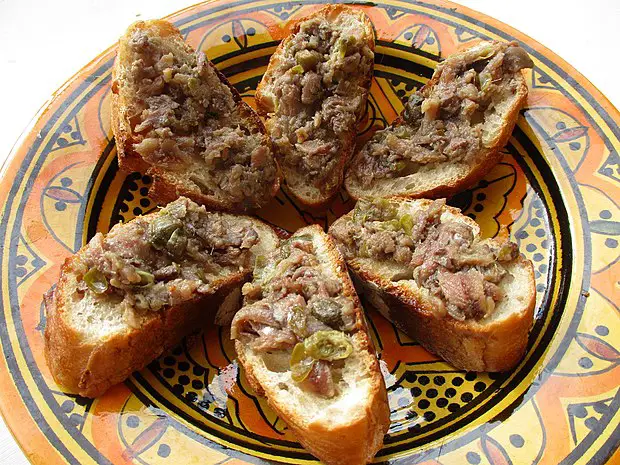
The anchoiade is one of the many traditional specialties of Provence. Only one bite is enough to awaken your taste buds!
Mainly made out of anchovies and capers, covered in olive oil and garlic, this recipe first known in 1899 is a true delight for the taste buds. Its taste may remind you of the sea. This specialty is even available in Spain, Italy, and in Occitania with a few variations: anchoiade from Nice, anchoiade from Camargue, bagna cauda from Piedmont…
The anchoiade can also be served as an Occitan hot pot, served with fresh vegetables such as cucumbers, peppers, or carrots.
Goat cheese salad
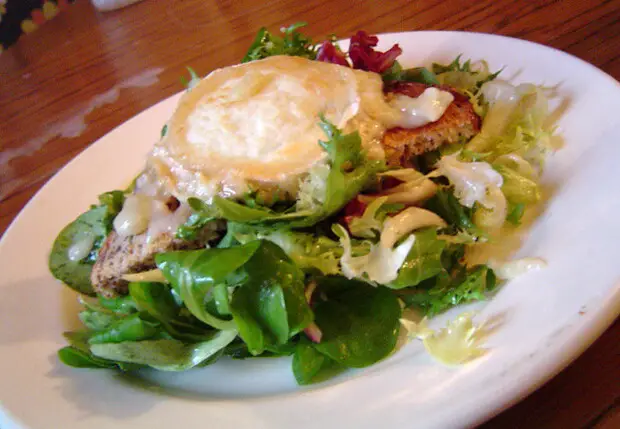
This is without a doubt one of the major starters served in restaurants across the country. Goat cheese salad melts in your mouth as you savor each bite.
This salad can be made using various ingredients like tomatoes, peppers, ham, or bacon bits, but the main ingredients are lettuce and goat cheese served on a toast.
The reason people love this salad so much is that it can be modified as one sees fit. Multiple cooking websites suggest various recipes, all of them different from one another. You can add apples, nuts and tomatoes, or bacon to the recipe. This salad offers a lot of variety.
Skewers with melon and dried ham
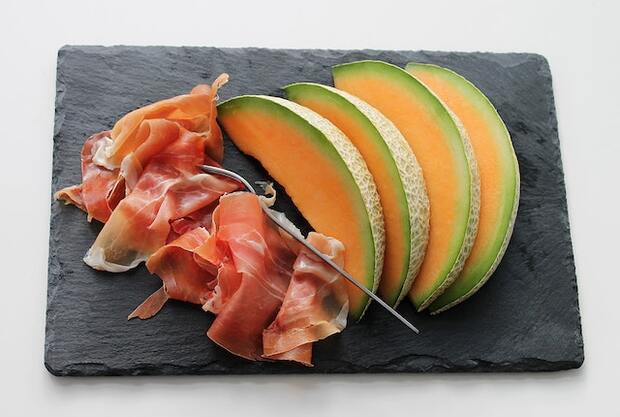
Here’s an idea: what if we make kebabs with both sweet and savory ingredients? The result of this is a culinary journey to France and Italy to savor a starter that is particularly nice in summer.
To vary tastes, we have a few examples to suggest: parsley for more flavor, mozzarella for more softness, or tomatoes if you want to add more color to your plate.
This recipe is easy to make: buy a very ripe melon and cut it, add dried ham, and you’re done.
French onion soup
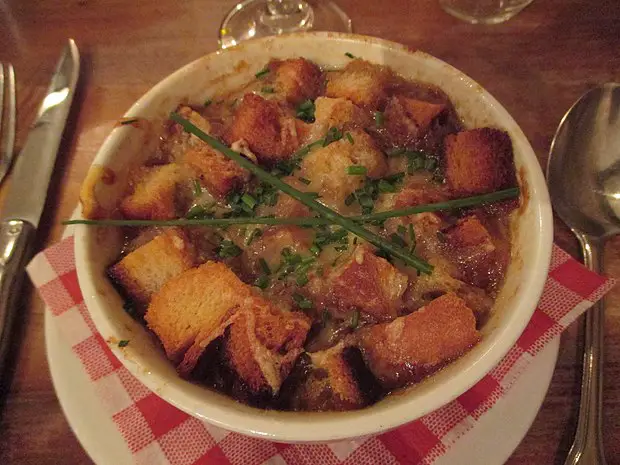
To anyone who wants to have a tasty soup, the French onion soup is one we would recommend you to taste. Legend has it that the King of France Louis XV had made the recipe and cooked it one night he had gone out hunting in the woods.
Made with beef gravy, broth, onions and bread croutons, there is a lot of taste in this soup that is recognized as a great classic of French cuisine. Some even say that it’s a good cure against hangovers, as the smell of alcohol is concealed by the flavors of the soup.
There is also the French onion soup with grated cheese, coming from the Halles de Paris. With shredded cheese added to the recipe, this soup tastes even better.
Deviled eggs
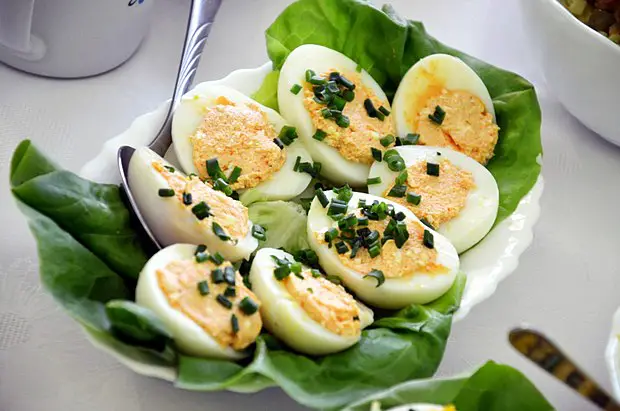
This recipe is a very simple one and is well-known by many French people. Deviled eggs are stuffed hard-boiled eggs, with the stuffing being a mixture made of mayonnaise and egg yolks being sprinkled on the egg and the paste.
The mimosa paste in this dish can be replaced with beet or spinach pesto, or you can add a bit of mustard while making the sauce, or even add shrimps on the deviled eggs to decorate your plate.
This is a simple recipe, and it can be customized any way you want. It can also be accompanied with lettuce if you want a well-dressed plate. Deviled eggs are also an ingredient in wraps.
Bouchée à la reine
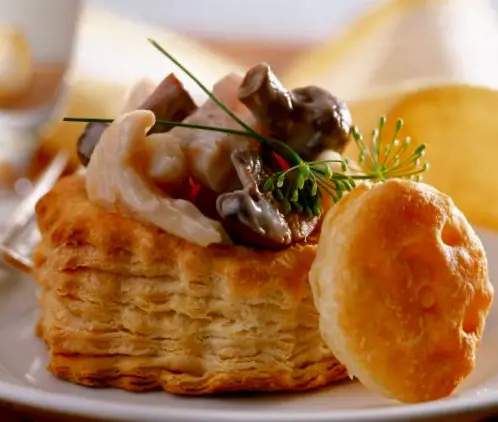
The bouchée à la reine is a dish that many grandmothers must have made for their grandchildren at least once in their life. This dish originates from the kitchens at the Versailles castle, and its name comes from Queen Marie Leszczynska, who is believed to have made this dish for her husband Louis XV.
Often served as a starter, it is made of a puff pastry croustade with meat bits (poultry, veal, ham), mushrooms, and a thick sauce composed of 3 different sauces (bechamel, velouté and white sauce) on the inside.
For the filling, it is possible to vary it by changing the ingredients, like adding foie gras, diced mixed vegetables, Northern pike, or shrimps for example.
Périgord salad
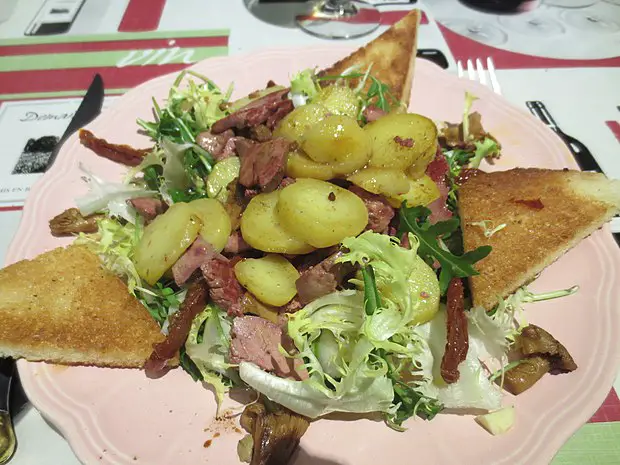
This mixed salad originates from Gascogne, an old province located in the Southwest of France, and will show a marvelous color pallet on your plate.
The subtlety and the outstanding detail about this salad is that it mixes warm and cold ingredients, thus creating a harmonious presentation: confit, gizzards, and dried duck breast, dried ham, foie gras, salad, potatoes, and tomatoes. A true delight!
And you can have your salad alongside a glass of wine from the Southwest: Côtes-de-Gascogne, Gaillac, Fronton, or Madiran.
Scallops
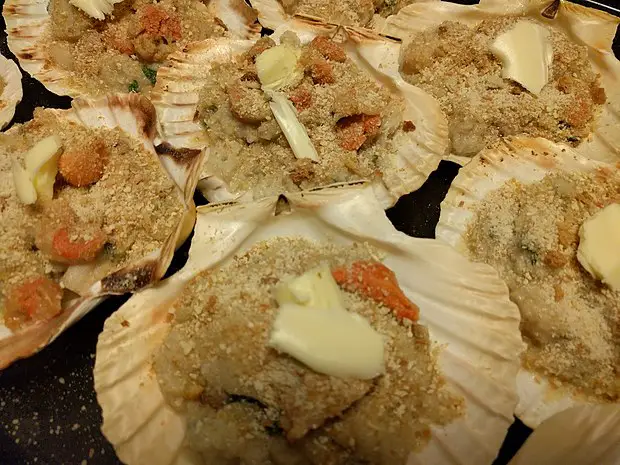
An appetizer which is often served warm: scallops are an excellent appetizer for every large meal, especially during New Year’s Eve.
Found on the English Channel and the Atlantic Ocean, they are mostly fished in Normandy. One thing that is important on the nutritional plan is that the flesh is very rich in iron.
Scallops can be eaten raw or cooked, and are found in various recipes: carpaccio, sushi, leek hot pot, or with morels. The Saint James shell can be cooked in multiple ways.
Country-style pâté
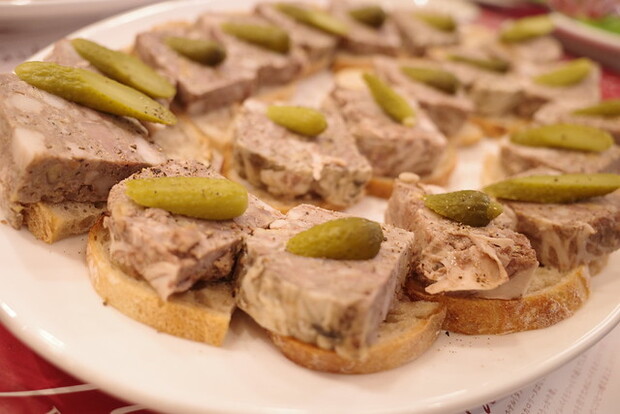
We now have an intergenerational starter on this list: the one and only country-style pâté. It is one of the most well-known traditional starters in French gastronomy.
This pâté is made of pork, poultry and veal meat, with condiments like garlic, onions, salt and pepper to season the stuffing. Depending on the region where the pâté is made, the recipe will be different.
Often consumed with a slice of rustic bread and some pickles, this meat is also often used as an ingredient for sandwiches.
Caillette of Ardèche
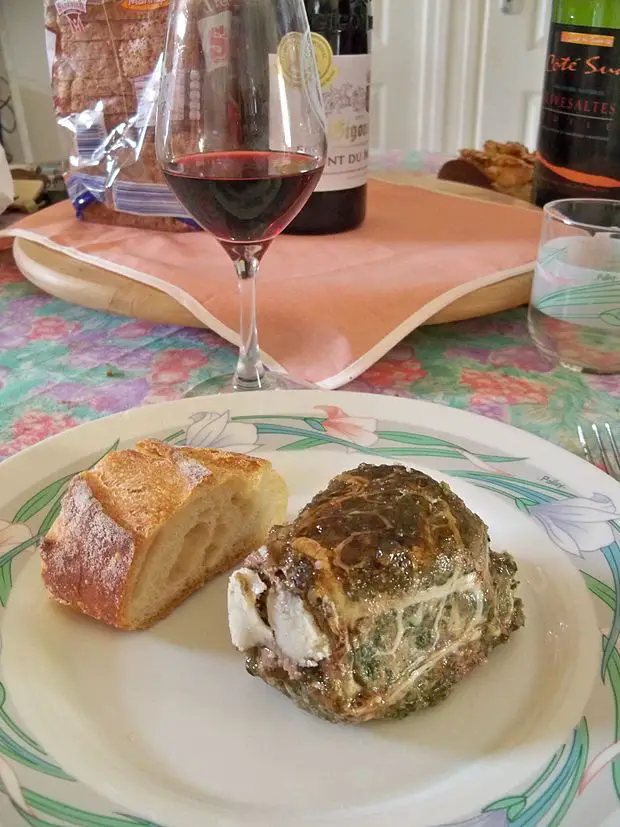
A specialty that can be traced back to the 16th century, caillette of Ardèche comes from the tradition of Ardèche pork products, mostly from the town of Chabeuil in the Drôme, where the Confrérie des Chevaliers du Taste-Caillette has been based since 1967.
History states that this specialty was prepared by local farmers. The pork meat is seasoned with spinach and spices. it is first molded by hand, before being covered with a strainer and going into the oven.
Caillette can be eaten hot or cold, alongside lettuce, and to add more treat to it, a glass of red wine.
Cervelat de Lyon in brioche
The city of Lyon isn’t only known for the puppet named Guignol and the quenelles. The cervelat, a sausage that can be eaten either hot or cold, made with pork shoulder stuffing, is also an important gastronomical element.
The cervelat is considered to be an emblematic specialty of Lyon cuisine, and a soft brioche wrapped around the sausage makes it even better.
This recipe is usually served at parties and can be eaten hot, warm, or cold, with children and adults alike enjoying that meat.
Landes salad
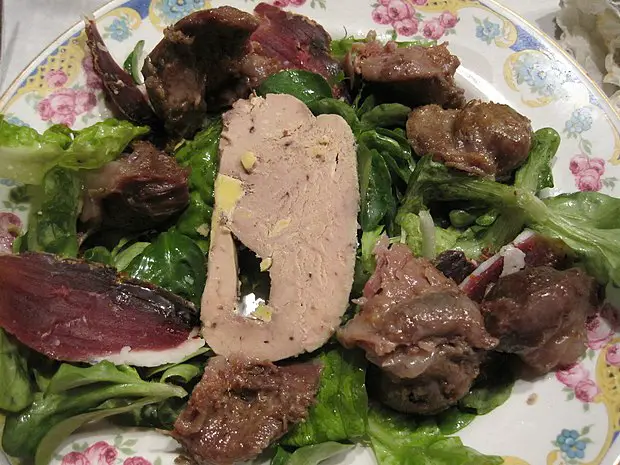
Coming from the department of Landes, this regional salad is the inhabitants’ favorite starter when going to the restaurant and remains to this day an excellent specialty of the region.
As is the case with the Périgord salad, hot and cold ingredients are combined into one salad, e.g., candied gizzards and duck breast. For the most gourmet, parsley, bread croutons, or bits of foie gras can be added to the salad.
Traditionally, the Landes salad goes well with a glass of Liquoreux (haut-montravel), White Dry wine(Côtes-de-duras), or Rouge (Vaucluse) wine.
One thing you must know: the Périgord salad is a variant of the Landes salad.
Flammekueche
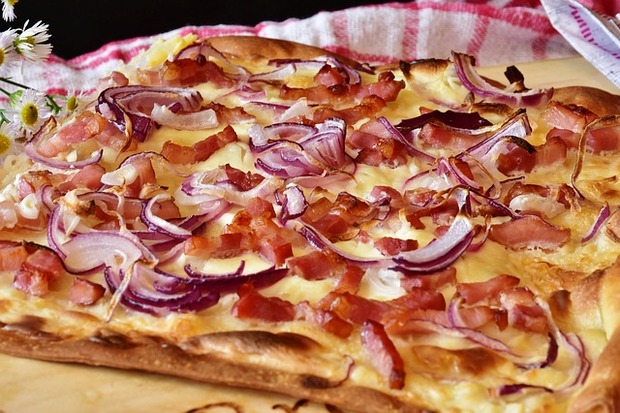
Also given the name tarte flambée in French, the flammekueche is a well-known specialty coming from the region of Alsace, and Germany by extent, since the 18th century.
Cooked in a fire oven, this thin-crust tart is traditionally made with fresh cream with potatoes, bacon bits, and onions as the filling. In Alsace, sauerkraut is added as the filling to flammekueches.
The flammekueche has become so popular with the public in France, as well as all over the world, that multiple restaurant chains have made it a specialty, with both modern and traditional recipes.
I aim to share my tips and recommendations for the beautiful country of France. My goal is to help you plan your next adventure, whether it’s a weekend getaway or a once-in-a-lifetime trip. From finding the best hotels and restaurants, to discovering unique activities and sights, I’ve got you covered!

